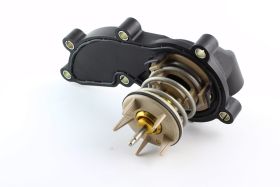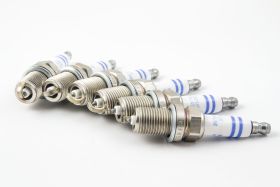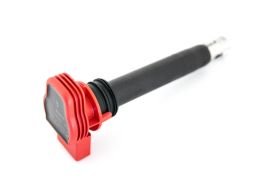Common Issues with 3.0T (Supercharged) TFSI Audi Engines


Let first start by saying the 3.0T Supercharged Audi engine is a very solid engine. It is not particulary failure prone and would be the most reliable S model engine to date. What we have listed below would be just a few things to look out for if you were to have an issue. With that said here is a little background on the 3.0T.
The 3.0T TFSI engine was a new engine that was first offered in the face lifted C5 A6 for the 2009.5-2010 model year. This new engine was based off of the 3.2L V6 FSI, which was available in some 2006-2009 A4, A5 and A6 models. While the engine blocks looked the same, there were several things changed to accommodate the twin-screw roots style supercharger. There are two generations of 3.0T engines, along with several different engine code variations depending on the year, and trim model of the vehicle, which we’ll touch base on below.
DAP Repair - VW & Audi Specialty Repair Shop
Audi Models with the 3.0T TFSI Gen1 Engine
S4 2010.5 - 2015
S5 2010-5 - 2015
A6, C5 platform 2009 - 2011
A6, C6 platform 2011-2015
A7 2011 - 2015
A8/A8L 2013 - 2016
Q5 2013-2017
SQ5 2015 - 2017
Q7 2011.5 - 2016
Audi Models with the 3.0T TFSI Gen2 Engine
A6 2016 - Current
A7 2016 - Current
A8/A8L 2016 - Current
Q7 2017 - Current
3.0T TFSI Thermostats
Over the years, there have been several updates to the thermostats in these engines. The early first generation 3.0T’s in the A6 were prone to overheating concerns due to thermostats that would stick closed. Sadly, this trickled over into some early C6 A6’s also. There were software updates performed to the engine control module, along with replacement of some thermostats based on certain operating conditions. Some models produced fell under service action, where thermostats, fuel rails, and gaskets were replaced as part of a customer satisfaction bulletin, and were replaced under warranty.
Associated Parts

3.0T TFSI Water Pumps

The water pumps on these engines are a conventional style water pump driven directly by the accessory drive belt, unlike the water pumps on the 2.0T TSI engines. These pumps aren’t a major failure item, but they do leak from the bearing weep hole occasionally. If the engine has previously overheated due to a faulty thermostat, it’s also best to replace the water pump. Some pumps have vacuum diaphragm that controls coolant flow based on engine control module demand. This is controlled via a solenoid valve on the back of the supercharger housing on some models.
Associated Parts
- Water Pump for 3.0t V6 (Supercharged) - for B8 S4 and S5
- Water Pump for 3.0t V6 (Supercharged) - for B8.5 S4, S5, A6 and SQ5

3.0T TFSI Oil Consumption Concerns
 Oil consumption in these engines isn’t as big of an issue as it has been with the first generation 2.0T TSI engines, but it’s still a concern that’s been addressed by Audi. Early first generation 3.0T engines produced before mid 2012 had a higher pressure regulation valve for the oil separator. This PCV unit is located under the supercharger assembly, vacuum lines, and fuel rails. This separator unit sucks air from the valve covers, under the supercharger, and into a heavy oil separating unit through a course of passageways and valves. Once the heavy oil particles have dropped, the small lighter particles are passed through a port into the base of the supercharger housing, and burned through the intake. The updated PCV valve has a lower pressure regulating valve which helps with oil consumption concerns. In the rare case that these updated parts didn’t alleviate the consumption, new, tighter fitting piston rings were installed in the engines.
Oil consumption in these engines isn’t as big of an issue as it has been with the first generation 2.0T TSI engines, but it’s still a concern that’s been addressed by Audi. Early first generation 3.0T engines produced before mid 2012 had a higher pressure regulation valve for the oil separator. This PCV unit is located under the supercharger assembly, vacuum lines, and fuel rails. This separator unit sucks air from the valve covers, under the supercharger, and into a heavy oil separating unit through a course of passageways and valves. Once the heavy oil particles have dropped, the small lighter particles are passed through a port into the base of the supercharger housing, and burned through the intake. The updated PCV valve has a lower pressure regulating valve which helps with oil consumption concerns. In the rare case that these updated parts didn’t alleviate the consumption, new, tighter fitting piston rings were installed in the engines.
Associated Parts

3.0T TFSI Misfires and Injector Issues

Over the years, there have been many issues with ignition coils, which trigger misfires and other driveability concerns. WIth the new 3.0T, failed ignition coils aren’t as common as it is with the 2.0T TSI engines. One major thing to be concerned about, if you replace your own spark plugs, it’s important to pull the ignition coil up from the red housings, and not from the base between the valve covers. This puts strain on the insulating housing of the secondary windings of the ignition coil, and can damage the coil internally. If you are experiencing misfires, it’s best to inspect and replace the spark plugs, if necessary. These engines do not like aftermarket spark plugs, so it’s best to stick with an OEM supplier such as Bosch or NGK. Service interval for spark plugs in the 3.0T is 55k miles, or 5 years, whichever occurs first.
Fuel injector failures are also not as common as they are with the 2.0T TSI, but it is known to happen from time to time. In most cases, these injectors will stick open, and cause the spark plug to foul up. The engine control module will also store several faults for the affected cylinder. Such faults are cylinder fuel in-balance, and rich O2 sensor readings.
Associated Parts
- Ignition Coil for Audi 3.0t (Supercharged) - OEM
- Ignition Coil for Audi 3.0t (Supercharged) - Bosch
- Spark Plug for Audi 3.0t (Supercharged) - OEM
- Spark Plug for Audi 3.0t (Supercharged) - Bosch
- Fuel Injector for Audi 3.0t (Supercharged) - OEM

3.0T TFSI Secondary Air Faults

The secondary air system on these vehicles is used to heat up the catalytic converters quickly during cold-start conditions. This system consists of an air pump, hoses, vacuum lines, electronic control valves, and secondary combi valves, which are located on the back of the cylinder heads.
These secondary air ports run the length of the cylinder head, into each combustion chamber. Over time, and depending on driving styles, carbon will build up in these small 10mm ports and cause faults in the engine control module for Secondary Air, Bank1/Bank2 Insuffecient Flow. There are several things to be aware of when dealing with this system. If you have broken air supply lines from the pump to the engine, damaged vacuum lines, electrical faulty control valves, or stuck combi valves, you will have one, or several insufficient air flow faults present. If all of these items check out and are operating as they should, you could have clogged air ports. Some models do have a warranty extension which covers the secondary air port cleaning up to 10 year/110,000 miles. Please check with your local dealer for details. Keep in mind, if any of the control valves, combi valves, or supply lines are damaged, or faulty, those items are not covered under the warranty extension, and would have to be replaced before the port cleaning can be performed.
Associated Parts
- Secondary Air Pump for 3.0t Supercharged B8.5 S4 and S5
- Secondary Air Pump for 3.0t Supercharged B8 S4, S5, A6 and SQ5
- Combi Valve (Passenger) Right for Audi 3.0t (Supercharged)
- Combi Valve (Drivers) Left for Audi 3.0t (Supercharged)

3.0T TFSI Oil Pressure Faults - Do Not Exceed 4,000 RPMS

Early Gen1 3.0T engines may have an older style oil pressure switch, which can fail, causing a fault for the high oil pressure circuit in the engine, preventing operation above 4,000 RPM’s. There is an updated switch available, designated as F22, and is purple in color. This pressure switch is buried under the wiring harness, secondary air pipes, and O2 sensor wiring on the bottom of the oil filter housing where the supercharger assembly is located.
Associated Parts















Comments
would like to know if a 2011 Audi Q 7 S- line high output engine 333 HP with only 75300 miles on it service at the dealership since day one is a good buy for $14500 let me know please thank you
Looking for troubleshooting advice on a 2013 Q5 3.0T supercharged engine. Experiencing intermittent crank but no start problem. Dealership had car for a week content find problem. Local mechanic same thing. Thanks
Dealing with vibration. Tranny mount and passenger side engine mount changed, new spark plugs, no oil leaks, only hi test gas used. Vibration still there. Idles ok at 8-900 rpm but when rpm raised to bout 1100 rpm or put into D vibrat es